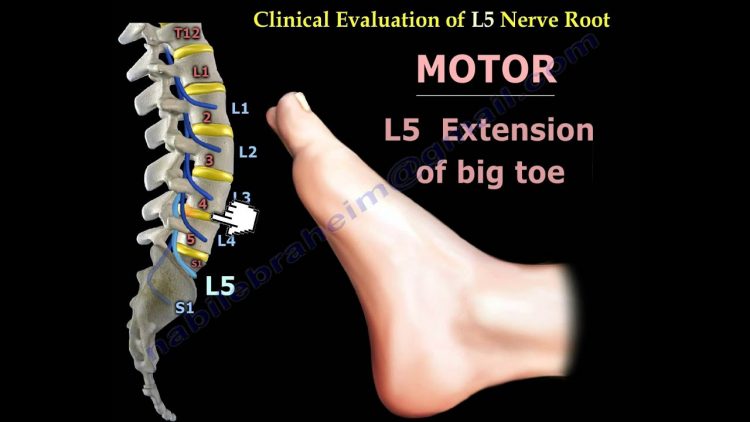Dr. Ebraheim’s educational animated video describes low back pain. Lumbar disc herniation.
Sometimes called a ruptured disc, a slipped disc, or a herniated disc and it most often occurs in the lower back.
Location of disc herniation:
1-Posterolateral: usual location, most commonly involving one nerve root (the lower one). Example: L4-L5 posterolateral herniation will involve L5 nerve root.
2-Foraminal L4-L5 (nerve L4): occurs in 8-10% of the cases. Involves the exiting nerve. Example: L4-L5 foraminal herniation will involve L4 nerve root.
3-Central involves multiple nerve roots. Predominantly causes low back pain more than leg pain. May cause incontinence of the bladder and bowel. Urgent surgical treatment if the patient presents with neurological deficits.
Positive straight leg raise= tension sign: indicates possible disc herniation.
Natural history
•90% improve without surgery
•Usually get better within 12 weeks
•Operative versus non-operative treatment results is about equal in 4 years follow up.
Risk factor
•Worst pressure on the disc bulge with prolonged sitting and bending over.
•Smoking and obesity
•Lifting and vibration
•Job dissatisfaction
•Anxiety and depression.
Red flags
•Infection: fever, diabetes, urinary tract infection and IV drugs abuse
•Tumor: age 50 years, unexplained weight loss, pain at rest and night.
•History of trauma: rule out fractures
•Cauda equine syndrome: back pain more than leg pain with bowel & bladder disturbance.
Abnormal MRI in asymptomatic patients
There is degeneration or a bulge of a disc in 35% of the subjects between 25-39 years of age. In patients 60 years old or older, the majority of the patients will have changes in the MRI. MRI abnormalities are common and must be correlated with the age and the clinical signs and symptoms.
Treatment
•Rest
•NSAID
•Physical therapy and chiropractor
•Massage
•Epidural injections gives some improvement
Indication for surgery
•Positive tension signs with persistent severe pain
•Progressive neural deficit
•Cauda equine (urgent decompression)
•MRI positive.
Ideal surgical candidates
•Sciatica with positive tension sign
•Positive neurological findings with positive MRI findings.
Surgery
•Relief of leg pain in the majority of patients.
•Back pain may persist in some patients
•Neurological improvement: 50% motor & sensory, 25% reflexes.
Discogenic back pain: patients may need fusion (a major procedure).
Become a friend on facebook:
http://www.facebook.com/drebraheim
Follow me on twitter:
https://twitter.com/#!/DrEbraheim_UTMC
Background music provided as a free download from YouTube Audio Library.
Song Title: Every Step
